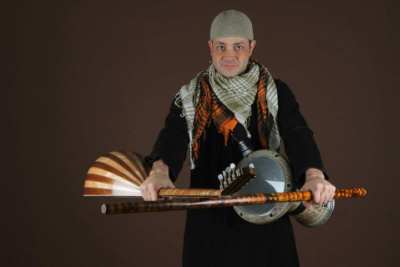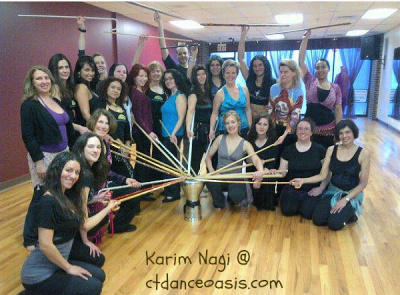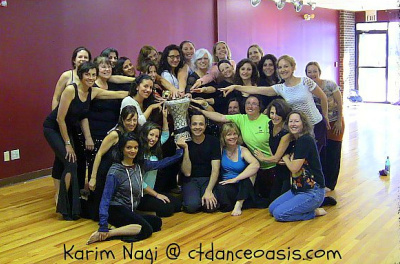Riskallah Riyad
CT Dance Oasis
Center for Middle Eastern Dance
|

The dynamic and extraordinarily talented Karim Nagi has taught multiple
sold-out workshops for Riskallah Riyad. Karim is an exceptional teacher. Here are some of the topics he has shared with
us.
|
| |
COMPLETE MUSIC LITERACY FOR DANCERS
In this 4 hour workshop we will review all the major Arabic rhythms
(Iqaa,
Iqaat), learning their name meanings, origins, how to speak and clap them,
and one Movement Combination for
each rhythm. We will also cover all the
major Arabic Music Scales (Maqam, Maqamaat) found in the most famous dance songs,
learning their names, how to sign each maqam, and how to use Movementto invoke the specific emotion of each. This class combines
Movement and Music to help each dance professional (or hobbyist) be fully aware of how to identify, utilize, and perform to
Rhythm and Melody.
SURVEY OF ARAB MUSIC FOR DANCE (Lecture)
For anyone who wondered what are appropriate songs for different styles
of
dance, and how to identify and categorize a song, this class will give many
answers. In these 2 hours we will
listen to a survey or songs from all over
the Arab World (Egypt, Lebanon, Syria, Iraq, Saudi Arabia and Morocco). We
will hear different genre's that include Raqs Sharqi, Baladi, Sha'abi,
Dabke, Andalusian Muwashahaat, Religious and
Trance music. This class will
help familiarize a dancer with all varying styles of music, allowing them to
make
well informed performance choices.
SAGAT
Karim has developed a comprehensive zill method that utilizes drum techniques
and an ambidextrous approach. Dancers learn to use the cymbals to communicate rhythms to a band and accent solo dancing and
body movements.
DANCER DRUMMER COMMUNICATION
This workshop bridges the gap between th two diciplines. Students will learn
how to interpret sound into movement by aligning body parts and motions with drum sounds and riffs. Students will learn how
to both lead and follow the drummer by maintaining the common language.
MUSICALITY FOR DANCERS
Several recurring themes in Arab music will be explained in emotive, non-musical
terms. the class covers Taksim, Melodic Themes, Vocal vs Instrumental Songs, Rhythms & Rhythmic Changes, Melodic Modulation,
Song Structure, Orchestration and Instumentation
ARABIC FOLK (Dabke, Cane, Zikr & Zar)
These are dances done by the people in social, celebratory and spiritual
group settings.
RHYTHM FOR DANCERS
Karim teaches each rhythm using the three-sound clapping approach, then
gives sample rhythms on the Tabla.
Workshop Group Photos
|
|

|
| May 2012 |
|
| |

|
| September 2013 |
|
|
|

|
| September 2013 |
|
| |
|
Home